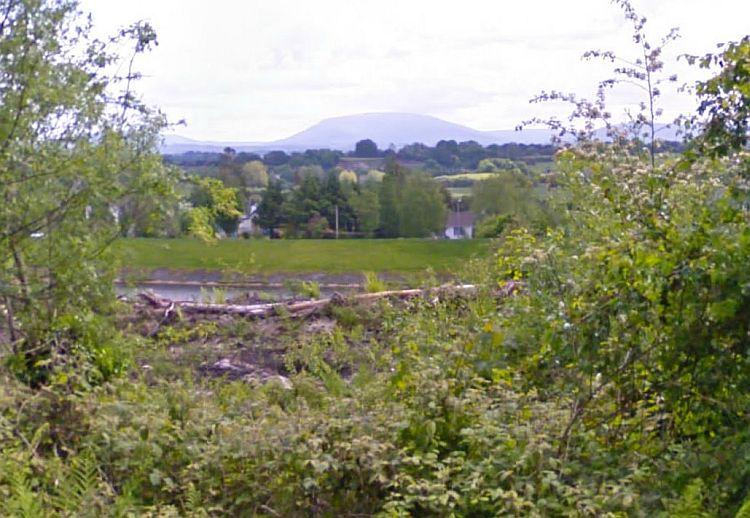William's Diary
As far as we know, William's diary was not published in his lifetime, but in 1916 it was brought to the attention of Colonel H. R. Southam by Daniel's grandson Albert Alonzo Gavin, who worked with Colonel Southam as an Assistant Recruiting Officer. Colonel Southam gave Sir Charles Oman, the renowned military scholar, a typed copy of William's diary which he annotated for publication. His annotations are not on this site as I believe they will be in copyright until December 2016; 70 years after Sir Charles' death. However, I am coming to the opinion that it will not be a great issue if I do add them, and might do so soon (S.G. 3rd July 2011).
William's diary was described by Colonel Southam as being 'in small handwriting on common paper of the period, and many of the words are somewhat difficult to read. There is no proper cover, and some writing on the outside cannot be deciphered.' He says that 'The dimensions of the book are... ...length 7½ inches; width 4½; thickness ½ inch'
Colonel Southam tells us that a miniature of William 'has been lost'.
Our understanding of William received a further setback when his original hand-written diary, having been given into the care of the 71st Highland Regiment for safe-keeping in its museum, was lost in a fire (See note below*)
Tantalisingly, according to an article in the Armourer Magazine*, 'Mr Douglas Houston, the son of Norman Houston (a descendant of William), has in his possession William's... ...sword and some other personal artifacts.' *date uncertain
William a Freemason
Today I had a letter from David E. Gavin, giving me some new information about William, his diary and his sword. David tells me that '...the Grand Lodge of Ireland has confirmed that William was a Freemason...' '...army units like his would have a travelling warrant and when he was promoted to an officer he would have been invited to join.'
In addition to the opinion given by Mark at Sword Sales Uk David gave me a copy of a letter dated from 2006 from Mr Richard Dellar of Bath to confirm that... '...it seems pretty conclusive that...' (William's sword) '...was not an officer's sword of the 71st Highland Regiment.' Mr Dellar continues that he believes William's sword to be a 'Celtic Hilted' heavy cavalry officer's sword c.1813-1821. These were not regulation pattern but were carried by some heavy cavalry officers during that period. In, particular, they are strongly associated with the 4th or Queen's Own Dragoons, a famous regiment which fought throughout the Peninsular. As you can imagine, it is an exceptionally rare sword. I have tracked down a total of 15 known examples to date, yours in the 16th that I know of. I attach photographs of 3 that I have in my possession for your information. I would be most grateful if you could provide some details of your sword, e.g. are there any markings or maker's name, length of blade, type of grip covering. If you happen to have any photographs, either printed or digital, well that would be excellent.
The question this throws up, of course, is how did your ancestor William Gavin come by such a sword? Being a cavalry sword with a blade length of around 34-35in., it is entirely unsuitable for a foot soldier. One would also have needed to be a fairly high ranking officer to get away with a non-regulation pattern as well (one of my examples belonged to General Hugonin of the 4th Dragoons). I think we can say with some degree of certainty that this was not the sword William Gavin would have carried when on active service. But clearly he picked it up from somewhere, maybe in the Peninsular, maybe from the field of Waterloo.'
Richard Dellar continues in a second letter:
'Your ancestor's sword
Many thanks for your letter and the photographs of William Gavin's sword which certainly confirm that it is indeed a heavy cavalry officer's sword of the so-called "Celtic-hilted" form. As you have correctly observed, most of these swords do vary in detail between themselves and in particular with regard to the hilt piercings. I have sub-categorised the examples I know of as those with 5 piercings or cut-outs and those with 7. Yours appears to be an example with 5 piercings whereas all of the three in the photographs I previously sent are the 7 piercing type. Differences in detail of this sort are completely normal for all pattern swords around this time, mostly due to different manufacturers interpretations of the pattern or manufacturing tolerances. As you also say, your sword is missing its original grip and backpiece which would have been very similar to my three examples
Anyway, to return to your ancestor. Wm Gavin is listed as Quartermaster in the 71a in Dalton's Waterloo Roll Call (Lionel Leventhal 1971) although unfortunately there are no accompanying biographical notes (in fact he is the only officer in the 71st with no notes, what a pity). However, the date of his commission as Quartermaster is given as 2 April 1812. It is also unfortunate that, having died in 1834, he did not receive the Military General Service medal which was instituted in 1843 for survivors of the actions fought between 1793 and 1815, most notably the Peninsular War. Anyway, when he received his commission as Ensign in the 71st after Fuentes D'Onoro, as an officer he would have been expected to (buy and) carry a sword but I think we can be as certain as it is possible to be that his sword would not be a Celtic hilted heavy cavalry officer's type First, I am sure that this type of sword did not appear until 1813 at the earliest and as 1 said previously, the blade length makes the sword suitable only for mounted (i.e. cavalry) usage. He would most likely have earned a pattern 1803 infantry officer's sword or something very similar As the Waterloo Roll Call confirms, he was then promoted to Quartermaster in 1812. The rank of Quartermaster is that of a commissioned officer whereas prior to 1811 you say he was a Quartermaster sergeant, i.e. an NCO, so it was a return to similar duties but not the same rank. No doubt the 71st sought to make use of his previous experience in that area. In fact, many officers who came up from the ranks as William Gavin ended up as Quartermasters. I have a sword which belonged to Quartermaster John Greenwood of the 7th Hussars which was given to him by his Commanding Officer Lt Col. Vivian upon obtaining his commission in 1809. So, as Quartermaster of the 71st, William Gavin would still have earned a sword but again, it is highly unlikely to have been the Celtic hilt. I'm afraid it will have to remain a mystery as to how he came by such a sword, my best guess would be that he picked it up on the field of Waterloo and kept it as a souvenir.'
This should be read in conjunction with the opinion received from Mark of Sword Sales UK, who thought that the sword was made after 1831; though he did have reservations and did not charge for his opinion because of these.
On 5th July: Stephen Gavin writes: Dear David,
Thank you very much for your additional information about William. I found the letters about the sword interesting. The date given by Richard Dellar is different to that given by 'Mark' at swordsales.eu, but he did not ask for a fee as he was not 100% certain about it. It occurs to me that if the sword could date from 1813 then it might have belonged to Colonel Henry Cadogan who was killed at the Battle of Vittoria in June of that year. William was obviously very close to him and was present at his death. William describes having his body taken to safe keeping. Just from the point of practicality, I imagine the first thing to take off an injured man would be his sword. But it's all very speculative.
*Concerning the Diary
The following comment from David contradicts the view expressed in an article in the Armourer Magazine that William's Diary was given to the the 71st Highland Regimental Museum:
'I had a lead from Mr Houston that it (the diary) was sold at Christies but they could not find any record of it. It was not in the museum at Glasgow because , like Evalyn, I have been there...'.
That it might have been sold at least gives hope that it still exists.
Waterloo Medal
Additionally he tells me: "...William did (according to the 71st Highland Regimental Museum)...' '...receive the Waterloo medal, recorded as 'William M Gavin'."
The Waterloo Medal was awarded to any soldier of the British Army who took part in one or more of the following battles: Battle of Ligny (16 June 1815), Battle of Quatre Bras (16 June 1815), and the Battle of Waterloo (18 June 1815).
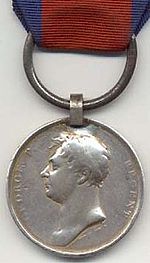 |
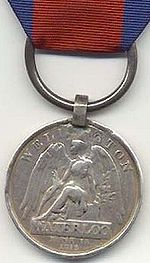 |
Ribbon: crimson with dark blue edges each approx. 7 mm wide.
Images and Waterloo Medal article on Wikipedia
courtesy of UserName: MarcusBritish
On 5th July Stephen Gavin wrote: Might I be right in thinking that in 'William M' the M is for Michael? In which case William might have given his first son his middle name, and does this suggest that William's father might also have been called Michael? A bit speculative I know, but it does seem very difficult to get back further than William and such a clue could be useful.
William's Grave
'...I have the graveyard names and locations, and hope to locate the grave.'
Some Basic Biography
William was born in about 1775. Little is know about his early years, but his army records show that he joined the army in 1803 at Arklow, a port approximately 40 miles to the south of Dublin on the East coast of Ireland in what is now Eire. Within a year he was promoted from Private, to Corporal and then Captain.In June 1803 he was with 'Captain Lebraine's coy', and in January 1804 with Captain John's coy at Limerick, on the west of Ireland. In 1804 he was with 'Captain Cother's coy'. May 1805 found him 'recruiting at Ennis', and on the 30th July of that year he 'embarked at Cove (Cobh) Harbour'. He is recorded at Midleton during December and January 1806, and in February 1806 was 'appointed Quartermaster Sergeant in Captain D Mackenzie's regiment'.
S.G. writes: It is assumed that William was a Catholic but the following is intriguing: William says in his diary that while serving in South America, 'about one league from St. Ignatia' (San Ignacio de Loyola, Buenos Aires?), the wife of Captain Duncan M'Kenzie's (then Paymaster M'Kenzie) servant, 'a beautiful Irish girl', was 'barbarously murdered' by two 'Quintas'*. He goes on to say that 'the culprits, on discovering next day that she was a Catholic, their grief and remorse was beyond measure. Here I first saw the process of interment in Catholic countries.' He goes on to explain the method by which the girl was buried. I wonder why a probable Catholic from Ireland would say this?
On 5th July 2011 Stephen Gavin wrote:
As for the Catholic/Protestant issue, I don't know enough about the history of the period. My 'instinct', based in nothing I can put my finger, on is that he was Protestant. I don't know why I say that, but he is at ease with the 'Ruling Class' which again, not based on much knowledge, was predominantly Protestant/Anglican.
I've found the following from Wikipedia, which suggests that being a Protestant would be useful in helping a person get to William's position: The overthrow, in 1613, of the Catholic majority in the Irish parliament was realised principally through the creation of numerous new boroughs, all of which were Protestant-dominated. By the end of the seventeenth century all Catholics, representing some 85% of Ireland's population then, were banned from the Irish parliament. Political power rested entirely in the hands of an Anglo settler-colonial, and more specifically the state church ( Church of Ireland ) minority, while the Catholic and some Protestant denominations suffered severe political and economic privations . In 1801, the Irish Parliament was abolished and Ireland became an integral part of a new United Kingdom of Great Britain and Ireland under the Act of Union . Catholics were still banned from sitting in that new parliament until Catholic Emancipation was attained in 1829, the principal condition of which was the removal of the poorer, and thus more radical, Irish freeholders from the franchise .
After his war service from 1803-1815 William returned to Ireland. Apart from his diary, which was published once only in 1921, little is known about him. He married Alicia O'Brien shortly before Waterloo. She bore him three sons: Michael, William, and Daniel. Michael was baptised on 26th April 1818, William Terence on 4th August 1820, and Daniel O'Brien, 16th October 1822
http://www.irishtimes.com/ancestor/surname/index.cfm?fuseaction=Map&Surname=gavin&UserID=
Odd Argentine Customs: http://www.oldandsold.com/articles29/south-america-35.shtml
As William's diary does not cover this period it is not know where that voyage was to unless it was to start the Campaign of the Conquest of Cape Colony which William records in his diary beginning with the Regiment's arrival on January 8th 1806.
Maps of Fisher's Lodge & O'brien's bridge
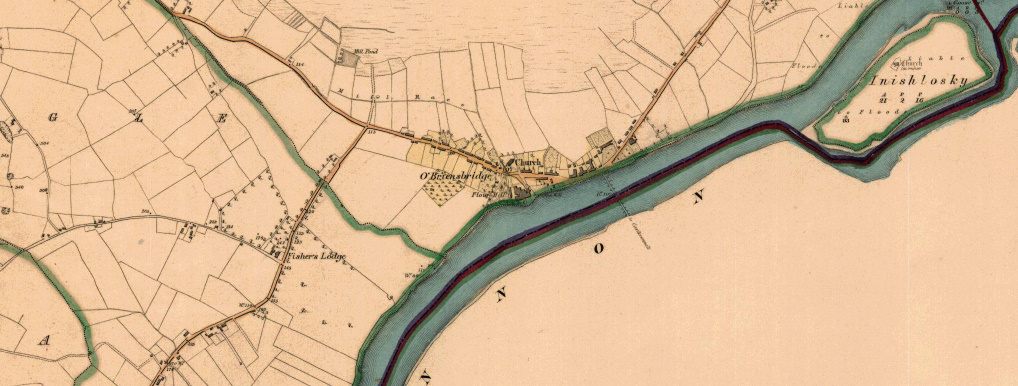
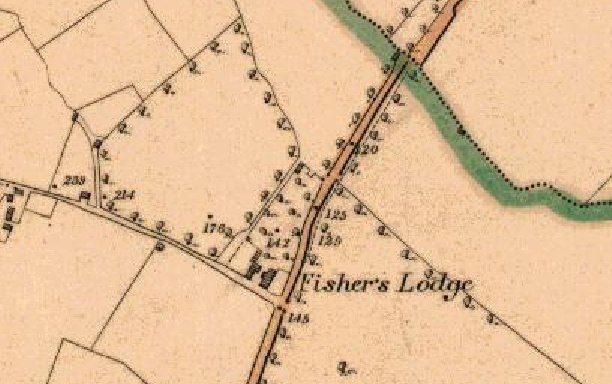
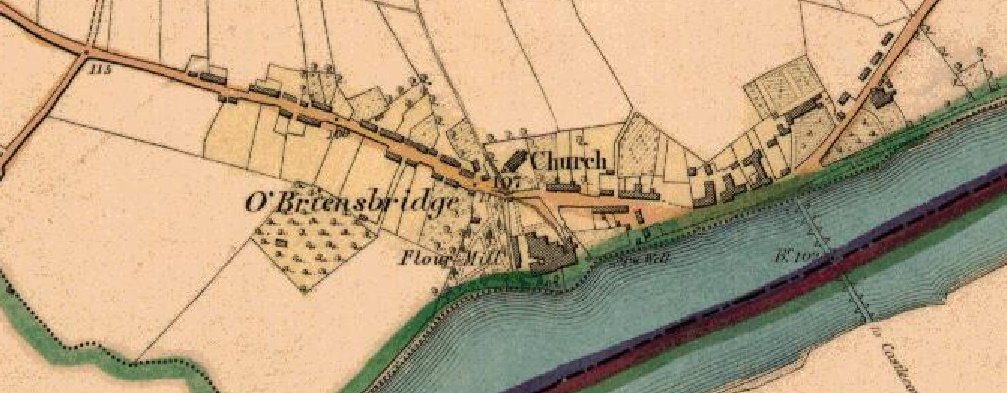
1842 Ordnance Survey 6-Inch Maps of County Clare
1842 Ordnance Survey overlaid on Google Earth Map
View from Fisher's Lodge from Google Street View
